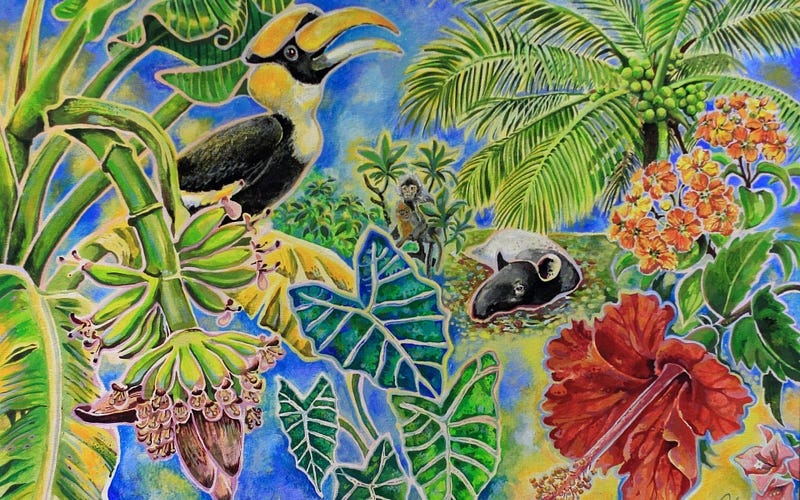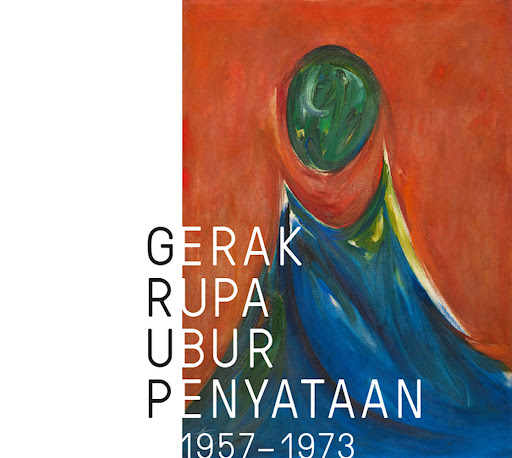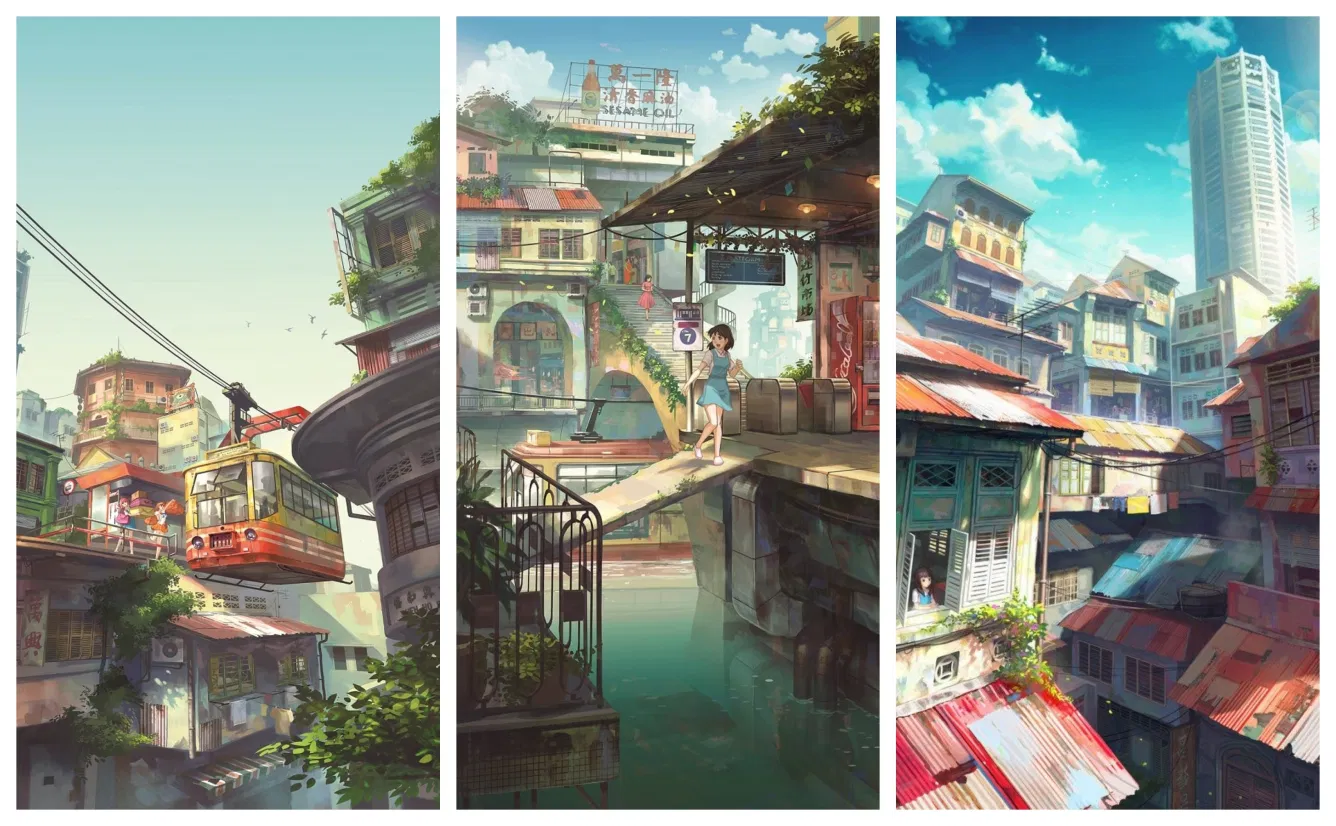Celebrating Malaysian Art & Film
Ingrained in the Universal Declaration of Human Rights is the people’s right to freedom of expression. When voices fail to be heard and…

Ingrained in the Universal Declaration of Human Rights is the people’s right to freedom of expression. When voices fail to be heard and words are ignored, art portrays and conveys the meaningful messages that are unheard in the most beautiful forms. Similarly to how people enjoy watching films or K-dramas, we stare in awe at amazing artworks by our very own local heroes when they convey meaningful messages through various types of artworks ranging from wood carvings to graffiti on the streets. In the run-up to the recent Malaysia Day, we are shedding more light on the often overshadowed artistic side of Malaysia.
Our local artists are talented in the many virtues of art ranging from films to crafts. A familiar piece of art everyone has in their home and pockets (unless one has not seen the flip side of the 50 cent coin) is the ‘Wau Bulan’. With its culturally rich decorative and strong-colored patterns, the traditional artistic intricacy of the ‘Wau Bulan’ is only the tip of a huge and beautiful iceberg if we explore the intricacies of Malaysian Art. As for films, an iconic one would be ‘Hang Tuah’. Despite its initial release in 1956, the story of ‘Hang Tuah’ is being passed down from generation to generation, and even integrated in the educational system for the important values it conveys.
GRUP

Malaysian artists have left a great impact on the art scene with their artworks, which are still being appreciated tremendously today. Dating back to 1967, the GRUP (Gereka Rupa Ubur Penyataan) had a line of 7 artists who would never have known the influence they would bring to Malaysian artistry. Anthony Lau, Cheong Laitong, Ibrahim Hussein, Jolly Koh, Latiff Mohidin, Syed Ahmad Jamal, and Yeoh Jin Leng came together in a seminal exhibition, and would later be known as the pioneers of modern art in Malaysia. Gereka Rupa Ubur Pernyataan, translated as Movement, Form, Torch and Statement, spoke of a common ground which inspired a new generation of artists to shape the modern aesthetic in Malaysian art. Although some of these artists have departed from us, messages conveyed from all their artworks remain as clear as the path they have paved for aspiring local artists today.
Modern Art in Malaysia
Today, Malaysian artists have propelled the art industry to creative heights. These artworks have not only made beautiful strokes on home soil, but also on an international stage. Aside from the traditions of wood crafting, ceramic and metalworks, modern artists of Malaysia have expressed nostalgia, history, humour and hope in ingenious ways with undoubtedly days of hard work on perfecting the nook and cranny of meticulous details.
Eddie Putera models the nostalgic scenes of Malaysia with his miniature dioramas. With his detailings for each miniature to reflect weather changes, rust and corrosion, it is no wonder one could easily mistake his work for a vintage photograph. Chong Fei Giap, on the other hand, depicts Malaysia’s rustic shop lots and gritty alleyways with a contradicting technology of digital illustrations. With his know-hows on the attraction of the mind, Chong’s art work induces for questions and dialogues with its “familiar, yet illogical” aspects, as quoted by Chong, who re-envisioned traditional scenes. Samantha Lee contributes to Malaysian art by food! As a stay-at-home mother of two, Lee whimfully creates art with tools as simple as food and an artistic mind. Despite not having a knack for cooking, she has inspired many mothers of Malaysia with her flavourful featurings of big names such as Michael Jackson, Lady Gaga and Disney Characters.

Yet, we must also acknowledge the challenges that the art industry faces, too, beginning from the lack of budding artists. The education system in Malaysia does not value art as a subject. In fact, students who are gifted with artistic talent are usually encouraged to drop the subject and opt for other core subjects such as economics, sciences or maths. This pushes many to discontinue their passion and focus on something that the world thinks is more “practical” and “valued in the employer’s perspective”. This leads to so much lost potential in what could be a great generation of local artists.
Furthermore, the knowledge of art in Malaysia is still a void left unfilled. Malaysian arts require not only outstanding artists, but also art theorists, writers, and curators who can write about art and thus be able to help raise the prestige of Malaysian art on not just a national level, but on an international scale, too. In order to achieve these objectives, organisations such as the National Visual Arts Gallery (NVAG) of Malaysia have been recommended to improve their writing activities regarding art knowledge.
Film Industry in Malaysia
Film is considered to be a vital and much appreciated form of art, seen as a source of popular entertainment and a powerful medium for education. The visual basis of films provides it a universal power of communication to not only its homeland but also on an international level. Unlike Malaysia’s art industry, the film industry has yet to explore its potential. With renowned Malaysian actors such as Michelle Yeoh and Henry Golding, the film industry has a promising future to expand its influence in both its homeland and internationally. The film industry has come a long way dating back to when it was first used as propaganda during the ruling of the British.
In this present age, Malaysia has successfully showcased our potential in occasional big hits such as Ola Bola, The Journey, Petaling Street Warriors and many more. In particular, Ola Bola is one of the films in Malaysia that supports and emphasises the multicultural aspect of Malaysia, as well as the unity among fellow Malaysians. The film is said to serve a main significance in bringing people together and serving as a suitable platform for instilling patriotic values in Malaysians, since people like to mimic what they see and hear in movies. Uniting qualities brings people together rather than dividing them based on ethnicity, culture, political opinions, or other differences.

Yet, it must be recognised that Malaysia’s film industry has had its fair share of highs and lows throughout its journey since World War I. Currently, it faces several challenges factored by the influx of Hollywood’s films, fragmented audiences and many more. Being a multicultural society, the audience’s disparate educational, ethnic and economic backgrounds contributed to the division of audience for the film industry — an issue that, as mentioned, Ola Bola had managed to deter from.
Another major issue the Malaysian film industry faces is the small domestic market. In 2008, it was estimated that the total audience for feature films was about 5.29 million out of a total population of 28 million. Thus, it can be said that the reception of local films is much lower than it could potentially be. Additionally, the industry is limited in terms of both the number of films produced and the contribution it makes to the economy. Local drama and serial productions currently total around 300 to 400 programmes per year, due to the aforementioned abundance of high-budget foreign television series and films produced annually. The painstakingly high competition makes it a tough fight for international recognition in terms of our nation’s film industry.
COVID-19 has taken a grave toll on the film industry as well, since the implementation of the lockdown in Malaysia in 2020. Most of the cinema’s theatres shut down due to the fast spread of the virus, and the film industry in Malaysia has lost a huge amount of revenues as a result of this. Not only have the theatres faced issues, but it was also difficult to go on with film shooting during the pandemic period as well. As a result of the ongoing lockdown in Malaysia, most of the public had chosen to watch movies online from the safety of their homes, mostly on apps such as Netflix, Amazon Prime, IMDb etc. However, with the prospect of the pandemic’s slowdown in the future, the film industry will also hopefully face its revival in the coming years.
Looking forward
It is vital to realise the importance of art and films, and consequently the importance of helping our local artistry to grow. Its power to induce conversations of awe, bond friends and families and even prompt tears from people all over the world is miraculous and amazing. Art is truly a tool for unity much needed in the multicultural society of Malaysia, and it is up to the eye of its beholders to see its true beauty and value in our very own homeland and, in the coming future, the world.
[Written by: Heng Jui Ching]
References:
https://www.lokalocal.com/blog/culture/9-msian-artists/
http://www.ijhssnet.com/journals/Vol_2_No_12_Special_Issue_June_2012/24.pdf
https://theculturetrip.com/asia/malaysia/articles/10-great-malaysian-films-you-should-watch/
https://thediplomat.com/2020/07/how-covid-19-is-impacting-asias-film-industries/


